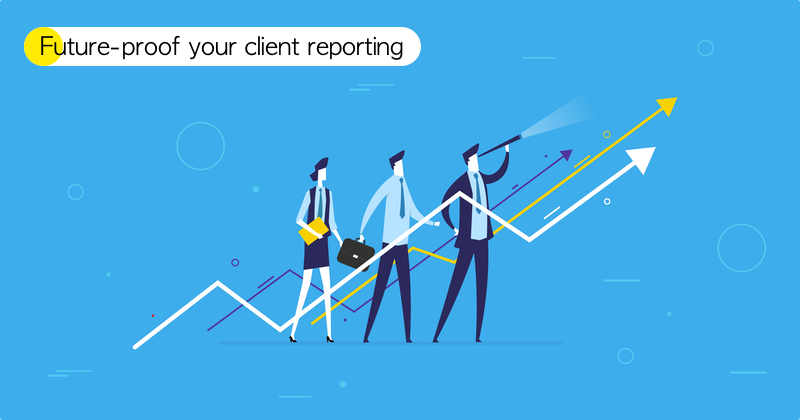As you might expect there are many different aspects to how the future of client reporting will evolve and how to future-proof your own reporting system. Hence this blog is split into multiple parts, each part looking at a different element of the future model. This is the fourth and final blog of the series.

In the first blog we noted that the existing systems and processes should be coping with the current requirements. It would not be possible or practical to extend and move client reporting into the future, if the current business as usual processes and systems can’t cope.
The second blog noted that self-service is a key factor to enable the reporting team to produce and evolve the reports required by the clients, in the required timeframes. Recourse to other departments and conflicting priorities will slow the pace of change and dilute the effectiveness.
The third blog considered “data” and “information”, and that “one size” of report definitely doesn’t “fit all” when it comes to client and fund reporting. Audiences will have differing requirements of the report. The reports need to be highly tailored to the specific audience and contain the relevant data and information, in the right language, and delivered in a timeframe and via a medium that is acceptable to the client. And, of course, this should be automated not manual.
This fourth and final blog relates to the link between the reporting processes and the digital strategy of the investment firm, and how one must be supportive of the other. Once the first 3 elements described in the first 3 blogs are in place, the firm’s client and fund reporting is in good shape. The reporting team are able to routinely produce all the required reports for the various audiences, in a timely manner. The reporting team are also able to manage the on-going evolution of the reports, including new data, additional information, new clients, new funds and new regions and additional languages.
A future-proof flexible reporting solution such as Reporting as a Service (RaaS) provides all the functionality and benefits described within this series of blogs. The final piece is to future-proof the solution in support of the firm’s digital strategy. For instance, being able to provide data, information and content to other systems such that the client can dynamically interrogate the data and content. Whilst RaaS is preparing standard reporting output, such as PDF, Excel, Word and PowerPoint outputs, the solution also produces digital content i.e. XML and HTML outputs for the client’s web portal or fund centre. Both the reports and the digital content are automatically and electronically delivered, so the reports viewed and delivered from within the portal are consistent and in-step. Visitors to the client’s portal can dynamically interact with the system to view the data and information at the required level of summary or detail, as required.
Reporting methods are rather like TV channels, they are added to rather than replacements for what’s gone before. Being able to produce reporting content in traditional ways is and remains important, probably more so than ever, while the elements of timeliness, accuracy and personalisation are key and must scale in a timely manner. Adding the requirement to integrate with the firms’ digital strategy means that manual and labour-intensive processes will not scale in support of the volume and timeliness requirements, neither will reporting that is summarised and impersonal meet the increasing demands of increasingly discerning clients.
Only with a future-proof and flexible reporting system such as Reporting as a Service from Opus Nebula can the levels of automation, personalisation, timeliness and scale be achieved so as to properly support the reporting and digital requirements of today and tomorrow.
To find out more visit: www.opus-nebula.com or contact us [email protected].
Andrew Sherlock
Opus Nebula

